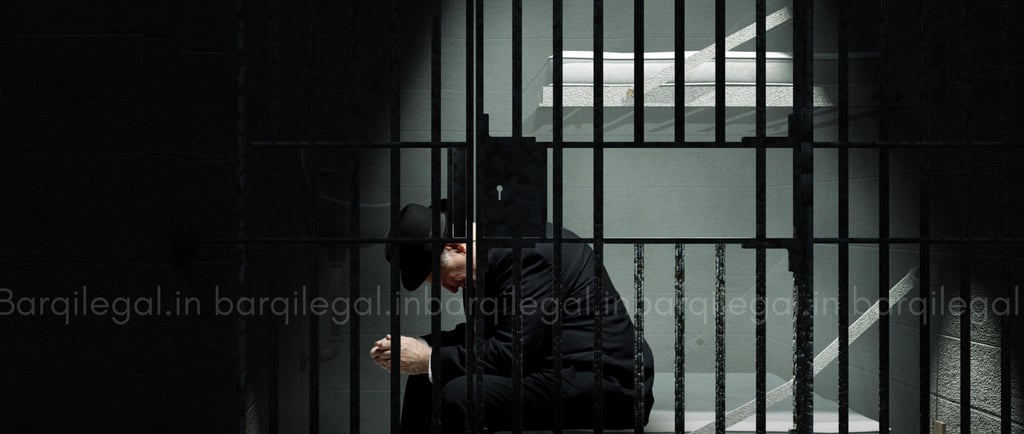Overcrowding Crisis: Bombay High Court Stays Transfer of Accused to Central Mumbai Prison
Bombay High Court recently halted the transfer of an accused individual, Satish Uke, to the Central Mumbai Prison. This ruling sheds light on the urgent issue of prison overcrowding in India and underscores the judiciary’s commitment to upholding the fundamental rights of detainees. The judgment, delivered on December 20, 2024, addresses broader concerns about systemic inefficiencies in the Indian correctional system.
12/25/20243 min read


The Case Background
The State of Maharashtra sought to transfer Satish Uke, a prominent advocate and activist, to the overcrowded Central Mumbai Prison. This move followed a series of legal entanglements involving allegations against Uke. While the state argued that the transfer was necessary for security and administrative reasons, Uke’s counsel contested the decision, citing the dire conditions in the Central Mumbai Prison.
The Central Mumbai Prison, one of the most overcrowded facilities in Maharashtra, operates far beyond its sanctioned capacity. Reports highlight unhygienic living conditions, lack of basic amenities, and inadequate healthcare, raising human rights concerns for detainees.
Legal Arguments and the Court’s Standpoint
The defense counsel argued that transferring Uke to such a facility would violate Article 21 of the Indian Constitution, which guarantees the right to life and personal liberty. They emphasized the prison’s overcrowding crisis, which infringes on detainees’ dignity, health, and access to adequate legal aid.
The court acknowledged these arguments, referencing various reports and previous judgments highlighting the adverse effects of overcrowded prisons. Notably, the Supreme Court of India has, in earlier cases, directed states to prioritize prison reforms to ensure compliance with constitutional mandates.
The Bombay High Court concluded that transferring Uke under such conditions would exacerbate his vulnerabilities, potentially infringing on his rights as an undertrial detainee. The court stayed the transfer and directed authorities to propose alternative arrangements that align with Uke’s rights and safety.
The Overcrowding Dilemma
The issue of overcrowding in Indian prisons is not new. According to the National Crime Records Bureau (NCRB), India’s prisons house 118% of their capacity, with some states reporting figures as high as 200%. This crisis stems from a combination of factors, including delayed trials, lack of resources, and a disproportionate number of undertrial prisoners.
Maharashtra’s prisons, including the Central Mumbai facility, reflect these challenges. Designed to hold approximately 3,000 inmates, the prison currently accommodates over 6,000, leading to severe strain on infrastructure and services. Overcrowding compromises prisoners’ mental and physical health, often resulting in violations of their basic rights.
Judicial Interventions and Reforms
The Bombay High Court’s decision aligns with a growing trend of judicial activism aimed at addressing prison conditions. In recent years, Indian courts have emphasized the need for humane treatment of prisoners, recognizing their rights under Articles 14, 19, and 21 of the Constitution.
In 2022, the Supreme Court issued guidelines for state governments to improve prison management, including reducing overcrowding, enhancing healthcare, and expediting trials. Despite these directives, progress has been slow, with limited funding and bureaucratic hurdles impeding implementation.
The Bombay High Court’s intervention in Uke’s case reinforces the judiciary’s role as a guardian of constitutional rights. By prioritizing the well-being of detainees, the court sends a strong message to authorities about the importance of humane correctional practices.
Implications of the Judgment
The court’s stay order has several implications for the Indian judicial and correctional systems:
1. Recognition of Prisoners’ Rights: The ruling reaffirms that prisoners, including undertrials, retain their fundamental rights, even while in custody.
2. Pressure for Reforms: By highlighting the conditions in the Central Mumbai Prison, the judgment puts pressure on state authorities to prioritize prison reforms and address overcrowding.
3. Increased Accountability: The decision emphasizes the need for state governments to ensure compliance with constitutional mandates, holding them accountable for systemic failures.
4. Precedent for Future Cases: This judgment may serve as a reference for similar cases, encouraging courts to take a proactive stance on prison-related issues.
A Call for Comprehensive Reform
While judicial interventions are critical, long-term solutions require comprehensive reform of India’s correctional system. Key measures include:
• Expedited Trials: Reducing the backlog of cases can significantly lower the number of undertrial prisoners, easing overcrowding.
• Alternative Sentencing: Implementing non-custodial sentences for minor offenses can help reduce the prison population.
• Improved Infrastructure: Investing in modern facilities and ensuring adequate resources for existing prisons is essential to maintaining humane conditions.
• Focus on Rehabilitation: Shifting the emphasis from punitive measures to rehabilitation can better prepare inmates for reintegration into society.
Conclusion
The Bombay High Court’s decision to stay Satish Uke’s transfer is a pivotal moment in India’s ongoing struggle with prison overcrowding. By prioritizing the rights and dignity of detainees, the judiciary underscores the importance of humane correctional practices.
However, lasting change requires a concerted effort from all stakeholders—judiciary, legislature, and executive. As India grapples with the challenges of its correctional system, this case serves as a reminder that the rights enshrined in the Constitution must extend to all citizens, regardless of their circumstances.
